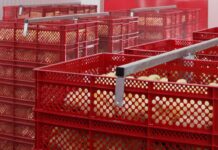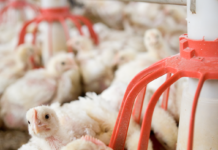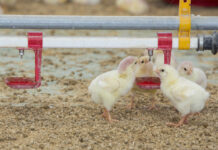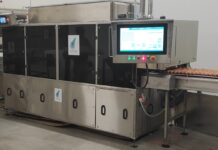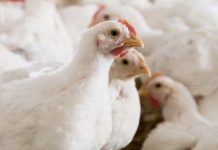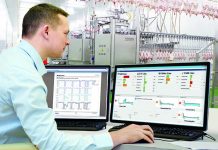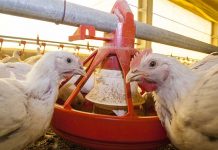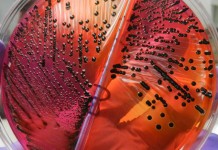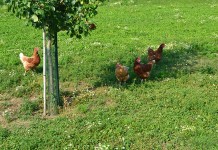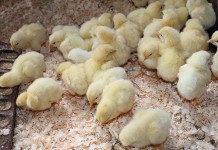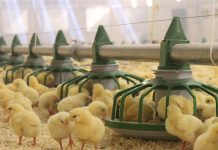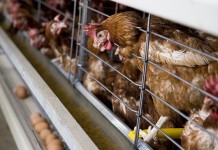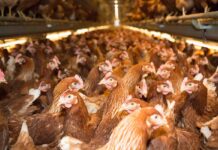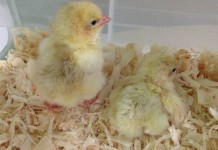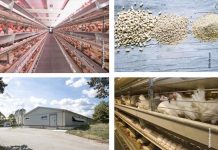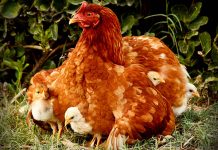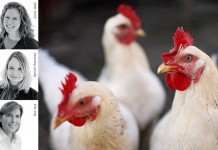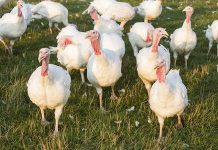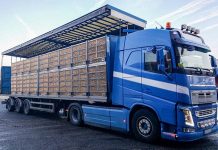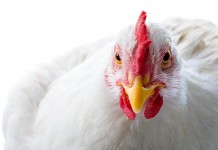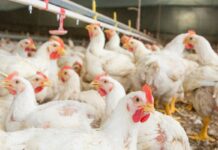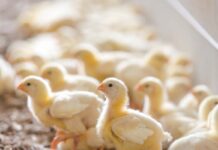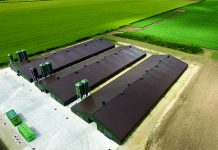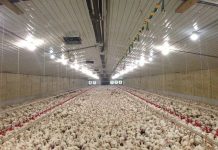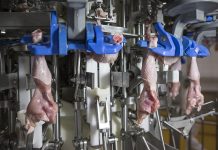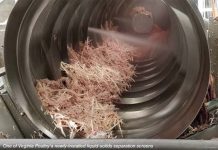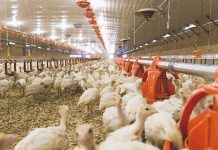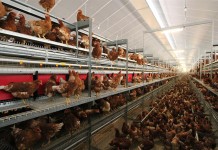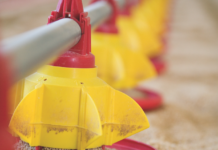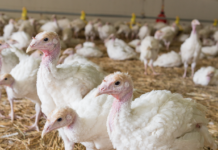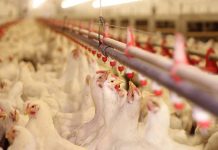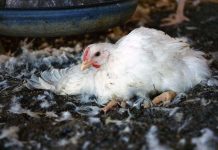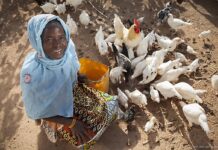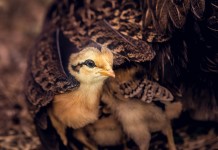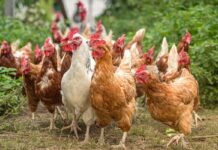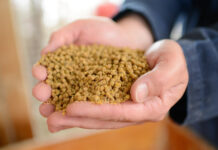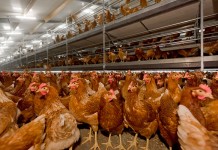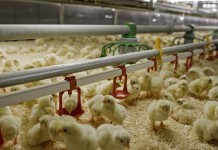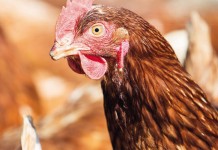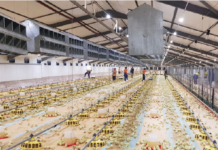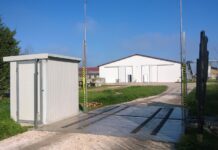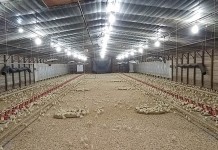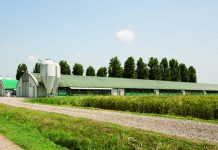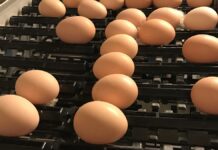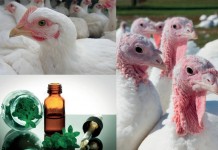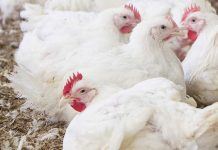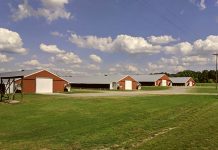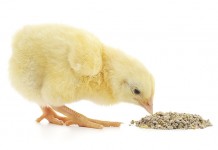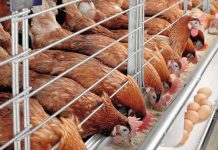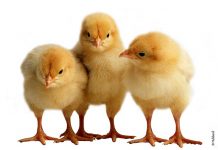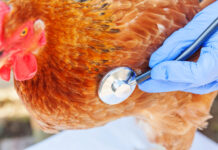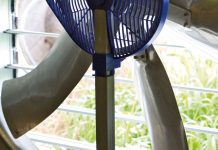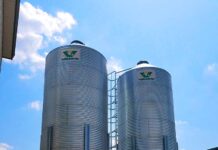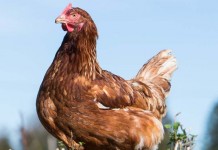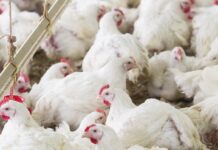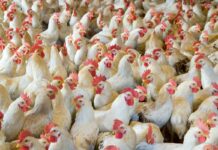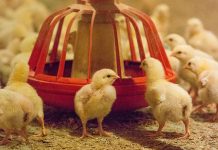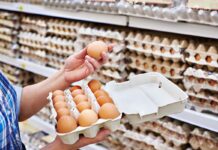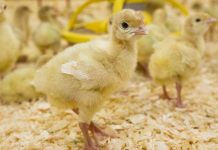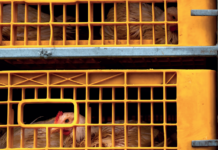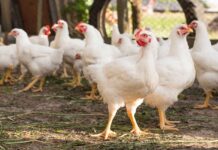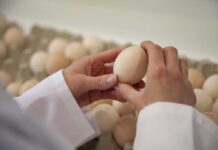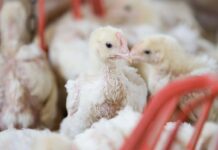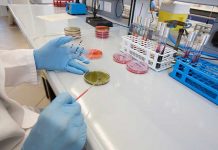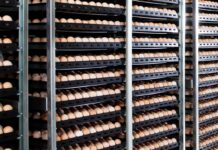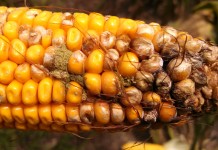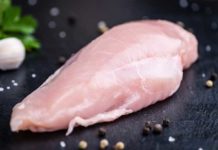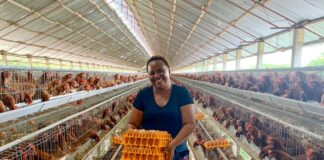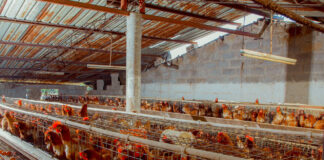How do coccidiosis challenges influence lipid digestibility and energy utilisation?
Coccidiosis continues to be one of the most pervasive and economically detrimental diseases in commercial poultry production. Controlling this enteric disease is an even...
Getting to the bottom of sex-related first week mortality in the hatchery
"Why are so many chicks dying in their first week in the hatchery?" I could hear the worry in his voice when I received...
Effect of multi-xylanase system on growth performance and gut health in broilers
Non-starch polysaccharides (NSP), particularly arabinoxylans (AX), with complex biochemical structures are one of the main causative factors for impaired growth performance and poor gut...
Understanding and managing water for successful flocks
Water is the single greatest input into the production of poultry products such as eggs and meat. The fact water is a relatively inexpensive...
Nectra OVOSEX1 – Brown layer in-ovo sexing machine & technology
NECTRA is a worldwide leader in automated hatchery equipment, providing comprehensive solutions for handling and analyzing live fertile eggs and embryos up to the day-old...
Non-antibiotic intestinal interventions
As the countdown towards implementation of the FDA’s Guidance for Industry 213 continues, interest in non-antibiotic intestinal interventions has increased. Earliest efforts in this...
Reaching full potential with Innova IMPAQT
A real-time impact on performance, availability and quality
A modern poultry processing plant is a complex network of interconnecting processes operating at high speed. It...
Dietary energy, digestible lysine and available phosphorus levels influence growth performance and carcass traits...
Energy (E) and amino acids (AA) are two of the most expensive components in broiler diets. There is no general consensus regarding the interaction...
Ability to detect Salmonella vs. Salmonella-Free in poultry processing
Poultry are sampled often for Salmonella during growout on the farm and throughout the processing plant. While on farm sampling is not currently a...
The effect of on-range insect feeding on range usage of free range laying hens
In Australia, on-range feeding of free-range laying hens can be frequently observed and is especially common in mobile sheds. While the biosecurity risk of...
Incubation temperatures influence muscle growth and energy in broiler embryos
In ovo embryogenesis in broiler can be modulated by alteration of external factors, like the incubation temperatures, as shown in several publications.
Embryonic myogenesis in...
Lowering dietary calcium and available phosphorus in broilers
The aim of this trial was to investigate the effect of lowering dietary calcium (Ca) and available phosphorus (av.P) during Starter (0 to 10d),...
Navigating an antibiotic-free and reduced antibiotic use poultry industry
Antibiotics are a type of antimicrobial medication used to treat infections caused by bacteria. In the 1930s, a sulfonamide was the first commercially available...
Novel Approach Improves Poultry Welfare by Reducing Stress on Chickens
MSD Animal Health (known as Merck Animal Health within the United States and Canada) recently announced the launch of EXZOLT® (fluralaner), the first systemic...
Evaluation of anti-inflammatory capacities of bacillus-based probiotics using an in vitro intestinal cell model
With the evolution of genetic potential of modern broilers, transforming the large feed intake into protein deposition is a real challenge for the digestive...
Infectious Coryza in vaccinated layers: are vaccines failing to protect?
During 2017 and 2018 Infectious Coryza was detected in several commercial vaccinated egg layer flocks in California. The Avibacterium paragallinarum strains isolated from infected...
Immediate post-hatch nutritional restriction in broilers
The effect on broiler muscle development and occurence of intramuscular fat.
Neonatal nutrition and immediate post hatch nutritional restriction represent an important facet of broiler...
Keel bone integrity in layers – Observations, nutritional remedies, and myth-busting
The issue of keel bone deformities and abnormalities is different depending on various housing systems for the birds. Keel fractures have received a lot...
Rethink the golden rules of incubation
Your incubation results might be affected by a lack of accuracy in the rules you’re applying. The rules of incubation have been derived from...
New applications such as superdosing of phytase to maximize phytate destruction to improve performance...
It is well documented that phytase supplementation in broiler diets improves P and Ca utilization through the destruction of phytate (IP6) and thereby allows...
Turkey reoviral arthritis update
Avian reoviruses (ARVs) belong to the genus orthoreovirus in the family Reoviridae. They are nonenveloped, double-stranded RNA viruses that are ubiquitous in domestic poultry...
Marel Poultry: A stress-free journey from shed to shackle
Marel Poultry solutions: for some six to eight weeks, even longer in the case of heavier and specialist breeds, broilers will have been carefully...
BBSRC launch the Agriculture and Food Security Strategic Framework
The new framework identifies the key research and innovation priorities of the Biotechnology and Biological Sciences Research Council.
The new BBSRC’s Agriculture and Food Security...
Feeding strategies for improved performance
When it comes to improving performance through nutrition, meeting poultry requirements in the way they want/need is paramount to fully achieve their genetic potential....
Perches: environmental enrichment or mechanical challenge?
The study compared the impact of wire ramps and perches on meat chicken mobility and the incidence of detached femoral caps (DFC), which can...
Best practice in broiler house management
How the right technology and proactive management can ensure best practice in housing on broiler farms
In partnership with Cobb, this article examines best practice...
The bioavailability of zinc in poultry: what does literature say?
Zinc bioavailability: zinc is an essential trace element for all the animals, including broilers. In case of deficiency, alteration of growth performance and distortion...
How to improve indoor air quality in poultry housing
USPOULTRY and the USPOULTRY Foundation announce the completion of a funded research project at Iowa State University in Ames, Iowa, in which researchers provided...
Resources and tools to write a good biosecurity plan
Poultry
industries in the United States (U.S.) have been in a unique situation after
the 2014-2015 highly pathogenic avian influenza (HPAI) outbreak. Analysis and
epidemiology of the...
Stork inline thigh filleting up to high capacities
Thigh meat consumption on the rise - a global trend
The market for thigh filleting is opening up, offering plenty of opportunities worldwide. To benefit...
Reducing water usage in turkey processing
Virginia Poultry recently installed several liquid/solids separation screens for reducing water usage in its turkey feather and offal processing. The two new primary and...
Higher stocking densities decrease performance without altering turkey meat quality
Quality of turkey meat is important but consumers are also concerned for the well-being of animals raised for meat production. However, some in the...
Advantages and disadvantages of Coccidiosis control programs in poultry
Coccidiosis is a protozoan economic disease of poultry, in which around 80% of losses are due to mortality, reduced weight gain, inefficient feed conversion,...
Housing systems in laying hen husbandry – second part
A status report
This analysis is an abridged version of a report which the Author prepared for the International Egg Commission (IEC) in London, UK.
In...
EU Compound feed production in 2021 – Market Outlook 2022
Industrial compound feed production in the EU remained stable in 2021. Looking forward, the spread of animal diseases and the continuing global grain market...
The ABCs of CDT (Clostridial Dermatitis of Turkeys)
Clostridial Dermatitis of Turkeys (CDT), also referred to as Cellulitis, remains a major disease issue across all geographic regions of the US; the annual...
Changing role of poultry nutritionist in a changing industry
Reflecting back on 30 years of working in the poultry industry as nutritionists we realize that the biggest changes that have occurred have mostly...
Backyard poultry flocks Salmonella spp. seroprevalence
As backyard poultry grows as a hobby in the United States there is an increased worry that poultry will become infected with Salmonella spp....
Separating welfare facts from fiction
It has become a confusing market for customers to decipher which technologies offer the best welfare-friendly solutions for their animals. How do you separate...
Management of ectoparasites in cage-free housing systems
As cage-free systems become more frequent in poultry production, we are forced to evaluate how pest control measures should adapt to ensure efficacy.
The...
Use of commercial premixes with low levels of organic trace minerals on egg production...
Common industry practice is to supply trace minerals well above published recommendations. An experiment was conducted to examine the effects of two commercial premixes...
Dietary non-phytate phosphorus levels for laying hens in the last phase of lay
The phosphorus (P) requirement of laying hens is an area of on-going debate and it is a factor that contributes to hen performance and...
How to reduce antibiotics in broiler production?
There is an increased awareness recently in relation to the sensible use of antibiotics within poultry and livestock production. When looking at broiler production,...
Automatic laying nests require good management
Martin Barten, senior hatchery specialist form Pas Reform Hatchery Technologies, tells his experience about a good management of the automatic laying nests.
“Pas Reform’s involvement...
General overview and installation of light traps in broiler breeder rearing
Designing a ventilation system for a dark out tunnel ventilated rearing house can be challenging. There are many different models and designs of light...
Biosecurity, the basics
By biosecurity we mean those measures aimed at reducing the risk of introducing and spreading infectious agents on farms, i.e. bio-exclusion and bio-containment measures.
Luigi...
Measurement of true ileal calcium digestibility of meat and bone meal for broiler chickens
Currently, there is a move towards the use of digestible phosphorus (P) in diet formulations for poultry due to P excretion into the environment...
Research shows nutritional effects of Coccidiosis vaccination
A funded research project on Coccidiosis was completed at the University of Arkansas in Fayetteville, Arkansas, that shows the nutritional effects of coccidiosis vaccination.
Project...
Best practice in egg production
How robust management and proactive measures can drive best practice for egg production on poultry farms.
In partnership with Cobb, this article examines best practice...
The role of feed additives in the protozoal diseases in poultry
Coccidiosis and histomoniasis are economically significant diseases in chickens and turkeys. Management, vaccination and medication are key tools in the control of these diseases...
Expanding feed milling capacity and quality at New Rosendale’s
At a time when the North American feed industry is undergoing a dramatic transformation driven by new rules, heightened market expectations and ground-breaking technology...
Copper influences broilers’ performance and growth
Copper (Cu) is an essential component involved in a wide variety of biochemical processes. It must be supplemented in the trace mineral premix as...
An alternative method to fight Avian Influenza Virus
A recent project was completed at the University of Iowa, Iowa City, Iowa, in which researchers developed a mobile system that can inactivate Avian...
How Xylanase can improve performance of a broiler diet
Whilst xylanase rich NSP-enzymes are used consistently in wheat based diets the question remains whether the positive response seen can be ascribed solely to...
Infectious Laryngotracheitis (ILT) outbreaks in laying hens in Konya province
Infectious laryngotracheitis (ILT) epidemic cases characterized with respiratory symptoms, hemorrhagic tracheitis and laryngitis findings were identified in laying hen’s enterprises in Konya province.
Ten Lohman-breed...
The challenging world of a primary breeder, matching genetic programs to market requirements
It is Hubbard’s genetic commitment to offer a wide range of products ranging from conventional cost-efficient broilers to slow(er) growing Premium chickens. It is...
Innovation is the key for sustainability
Today it is important innovation, and it is the main way to sustainability. Here, we introduce René and Jolanda van Doren who have together...
Infectious Laryngotracheitis (ILT) Advisory – City of Kingston
The Feather Board Command Centre (FBCC) is issuing an Infectious Laryngotracheitis (ILT) biosecurity advisory for an approximate 10 km area in the City of Kingston.
FBCC...
Ventilation and heating issues during cold weather
Many problems during cool and cold weather can be traced to inappropriate ventilation rates. Poor broiler health, respiratory problems, and breast blisters are common...
VAL-CO, clean and dry feed from delivery to consumption
A VAL-CO feed storage and transport system is designed to keep feed clean and dry from delivery to consumption. Store your feed in our...
Impact of stress on feather cover of laying hens
Feather pecking is a behavior in which individual laying hens peck repetitively at the plumage of conspecifics, causing poor feather. Although FP can be...
Different incubation profiles for different breeds?
Breeding has powerful effects. Although all chicken breeds originate from the same wild ancestor, they differ dramatically in appearance, physiology, type and metabolic rate....
Effects of early enrichment on range use in free-range laying hens
Free-range laying hen production systems are perceived to be preferable for hens’ ethological needs. However, not all hens use the range daily with some...
Using accelerometers and artificial intelligence to predict presence of woody breast
The broiler industry has been challenged with a condition referred to as "woody breast" for the past 8-10 years, which can affect a significant...
Clinical coccidiosis in broilers with concurrent infection of Eimeria maxima and Eimeria praecox
Coccidiosis is a complex disease in chickens caused by protozoan parasites in the genus Eimeria. As Eimeria species are ubiquitous in poultry facilities, coccidiosis...
Short chain fatty acids and poultry gut health
Due to customer demands, producers have been asked to change the way they grow production animals, specifically through the removal of antibiotics. With this...
New animal welfare labelling system
The conclusions of the animal welfare labelling subgroup of the Commission’s Animal Welfare Platform were released. Copa and Cogeca welcomes the main conclusions of...
Clostridial Dermatitis
Clostridial Dermatitis is a disease of economic concern in turkeys. Clostridium perfringens and Clostridium septicum have been isolated consistently from dermatitis lesions in turkeys....
Managing live hanging for quality and yield
Once the market-age birds arrive the plant the personnel must concentrate on the preservation of their physical integrity and economic potential. In such scenario,...
The Salmonella initiative
An enduring challenge and reputational issue for the egg industry is caused by the presence of Salmonella enterica serovars (particularly some Typhimurium serotypes), which...
Energy-efficiency in pre-conditioning inlet air for setters and hatchers
Hatcheries are found in a variety of climates, from the hot, humid tropics of South East Asia to hot, arid zones in the Middle...
Influence of age on the standardised ileal amino acid digestibility of maize and barley...
Grains are the major energy sources in broilers. However, they also supply about 40% of the total dietary protein and contribute significantly to the...
Variation in individual egg weight loss
A chicken egg has to lose around 11-13% of its original weight during the first 18 days of incubation. This weight loss is needed...
Performance, immunity and blood biochemical parameters of broiler chickens fed diets containing Kappaphycus alvarezii
Kappaphycus alvarezii (KPA) can be incorporated at 1.50% in diets for improved performance, immuno-responsiveness and blood biochemical parameters in broiler chickens.
Introduction
Kappaphycus alvarezii (KPA) is...
Salmonella prevention strategies and influences of sampling method selection
Multiple factors can influence both Salmonella prevalence and diversity of Salmonella serogroups detected from both pre and post-harvest samples. Sampling methodologies vary widely when...
How can hatcheries lessen the impact of Covid-19?
The world is currently experiencing a pandemic caused by a coronavirus, Covid-19. While the virus probably originated in animals, it appears that it only...
Feed borne mycotoxins: the threat to poultry?
Mycotoxins are metabolites produced by molds (fungi) that can infest crops pre-harvest and can continue to flourish under sub-optimal storage conditions. Grains with high...
New method to detect woody breast fillets
USPOULTRY and the USPOULTRY Foundation announced the completion of a funded research project at Auburn University in Auburn, Alabama, in which researchers found a...
Detection and quantification of Gallibacterium anatis and Mycoplasma synoviae
Mycoplasma synoviae is one of the most common preconditions for secondary bacterial infections in poultry. It causes subclinical infections of the upper respiratory tract,...



